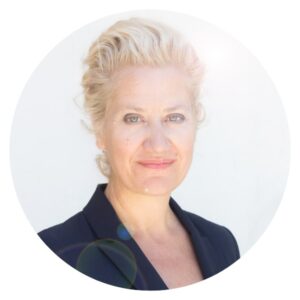Meditation for Healing Chronic Illness: Rewiring through the Right Type
As you go forward along this recovery journey, there are powerful techniques you will discover to help you rewire and rebalance your system. One of the tools that can help begin to transform your life is listening to the right type of guided audio meditations.
Meditation is one of the key tools used in the healing space to gently rewire the brain, and has long been practiced across various cultures for its profound impact on mental and physical well-being. Recent advancements in neuroscience have shed light on how meditation can be seen lighting up the brain, showing physical evidence of new neural pathways coming into being. Meditation offers tangible benefits for those suffering with Chronic Fatigue Syndrome, ME and LongCovid.
Meditation is more than a relaxation tool. It’s a way of speaking directly to your nervous system, helping it shift out of fear and into safety. And through this shift, something beautiful happens: your brain begins to rewire.
So let’s take a look at how we know these ANS and brain benefits are happening.
Introduction to Meditation
Meditation is a powerful practice that involves training attention and awareness to achieve a mentally clear and emotionally regulated state. The goal of meditation is to cultivate restoration and inner peace, leading to a more balanced and fulfilling life. Various meditation practices can help reduce stress, anxiety, and chronic illnesses, while improving sleep quality and overall mindset.
Regular meditation practice can also enhance focus and concentration leading to an improved recovery rhythm and daily life. By incorporating meditation into daily life, individuals can develop a greater sense of self-awareness, self-acceptance, and compassion, leading to a more positive and empowered outlook. Whether you are dealing with chronic illness or simply seeking a way to bring more resilience and clarity into your life, meditation offers a path to achieving these goals.
The Neuroscience of Meditation
The brain is not fixed—it’s changeable, responsive, alive. This is called neuroplasticity, and it means that throughout life, your brain can form new connections and pathways. Even if patterns of pain, fatigue, or stress have become deeply ingrained, they are not permanent.
Consistent meditation has been shown to:
Increase gray matter in areas related to learning, memory, and emotional regulation
Reduce activity in the default mode network—the part of the brain linked to looping thoughts, anxiety, and rumination
Support the parasympathetic nervous system (rest-and-digest mode), allowing your body to move out of fight, flight, freeze
By listening to a soothing voice, following the breath, or being guided into detached presence, you are already teaching your mindbody system to soften, recalibrate, and respond in new ways.
One well-known study from Dr. Sara Lazar at Harvard Medical School showed that long-term meditation led to structural physiological changes in areas of the brain linked to attention, sensory awareness, and emotional regulation. The changes were especially noticeable in people who practiced regularly. This research was some of the first to prove that meditation physically changes the brain in ways that support healing and build resilience.
“We found that brain regions associated with attention, sensory awareness and emotional regulation were thicker in meditators than non-meditators.” — Dr. Sara Lazar
Read the study here if you would like to.
A Practice Rooted in Ancient Wisdom
Meditation is being used for healing and wellness nowadays, but has been practiced for over 2,500 years.
Long before science could scan the brain or explain stress responses, meditation was already being practiced by those seeking inner peace, clarity, and freedom. The Buddha sat beneath a tree and turned inward. Through developing and practicing a stillness of being, he discovered and shared that there is a difference between pain and suffering. He proposed that all suffering begins in the mind… and that freedom from suffering begins there too.
Early Buddhist meditations weren’t about relaxation or productivity — they were practices of presence. They helped the practitioner develop awareness – awareness of thoughts, of sensations, and of feelings — learning to not cling to them or pushing them away. For many this practice became a gateway to inner freedom.
Buddhist monks, Yogis, Sages, and Mystics practice “sitting”, meditative living or being in stillness whilst turning inward — is not about simply doing nothing. It’s about becoming available to inner transformation, to peace and to grace.
Ancient Roots, Modern Relevance
Today, modern science is beginning to catch up with that ancient knowing. Teachers like Dr. Joe Dispenza, Dr. Tara Brach and Dr. Deepak Chopra have brought Meditation into the field of neuroscience and mainstream healing.
Dr. Joe Dispenza has brought new attention to how meditation creates measurable, physical changes in the brain. Through brain scans like EEGs and fMRIs, his research shows that meditators can shift into brainwave states associated with deep healing and altered consciousness.
He teaches that when we move into elevated emotional states we open the door for the body and mind to heal. “You can’t think greater than how you feel,” he says. Meditation becomes the practice that helps us feel differently enough to then think differently.
Deepak Chopra has played a major role in bringing spiritual wellness into mainstream medical spaces. Through his books and public talks, he invites us to see health not just as the absence of disease but the presence of harmony between mind, body, and spirit.
He speaks often of the body as a “field of energy, transformation, and intelligence.” Meditation, in his teachings, allows that field to shift into coherence. His work has influenced thousands of clinicians and wellness centres to adopt more integrative practices that combine modern medicine with meditation, mindfulness, and presence.
Tara Brach is a clinical psychologist and meditation teacher whose work speaks to the heart of those in pain. She teaches that healing begins with radical compassion—the act of turning toward our suffering with tenderness instead of judgment.
“The curious paradox,” she says, “is that when I accept myself just as I am, then I can change.” Her meditations often begin with the simple words, “This belongs.” This act of acknowledgment is especially powerful for those whose symptoms have long been dismissed or misunderstood.
Together, these voices help bridge the gap between the mystical and the measurable—showing that healing is not only possible, but already within you.
Getting Started with Meditation
To begin a meditation practice, find a quiet and comfortable space to sit or lie down. Start with a guided audio, or if you are extremely sound-sensitive you can begin by focusing on the breath, noticing the sensation of the air entering and leaving the nostrils, and try to maintain focus on your breathing pattern. Guided meditations can be very helpful, providing a gentle and supportive navigation into meditation practice.
Begin with short meditation sessions, such as a few minutes, and gradually increase the duration as you become more comfortable with the practice. Remember to be patient and kind to yourself as you develop your meditation practice, and don’t be discouraged if your mind wanders or you encounter challenges. The key is to keep showing up for yourself and allowing the space to grow and evolve in your practice.
Meditation and Chronic Fatigue Syndrome
When applied to chronic illness, this ancient wisdom of practicing meditation becomes profoundly relevant. Many people with conditions like CFS, ME, or LongCovid find themselves caught in cycles of fear, self-monitoring, and identification with symptoms. The body feels unsafe. The mind races. The nervous system becomes stuck. A loop is created – one from which it becomes very difficult to break free.
Meditation offers a soft and powerful way to begin unhooking from that spiral. It’s not about pretending symptoms aren’t real—they are—but about learning to observe them without panic, without tightening. With time, this creates spaciousness, and that spaciousness is what allows the nervous system to begin rebalancing.
While physical pain or exhaustion may be present, meditation teaches us that suffering—the layer of fear, resistance, and self-judgment we place on top—can be gently softened.
To begin with it can feel very difficult to slow down, to be still or rest – especially during periods of increased energy (those “good days” or low symptom days). This can stem from a desire to maximise productivity during the rare energetic moments or from feelings of frustration and overwhelm. However, there is a need for rest, and that rest is often not provided by sleep, as so many do not feel restored by their sleep when suffering these conditions.
Meditation offers a way to get the benefits of restorative rest without having to stop or try to sleep or even to lie down or go to bed… it gives the opportunity to replenish without exertion. It can be done lying or sitting – with gentle audio guidance. Even 5–10 minutes a day can begin to restore a sense of rhythm, reduce heart rate variability, and begin to regulate your emotional landscape.
It’s not about fixing. It’s about allowing. Allowing your system to feel safe, and ultimately… to begin again.

Which Type of Meditation for Chronic illness Healing
There are many styles of meditation, but not all are suited to those navigating chronic illness. Some practices can overstimulate or lead to disconnection.
For this healing path, we focus on restorative meditations—the kind that teach the nervous system how to feel safe again, without overwhelm. These type of meditations are designed to be done lying down ideally, with your eyes closed, and your heart gently held. Or if the frenetic feelings of being in the tired and wired state make lying down impossible, they can be done whilst gently moving around.
Meditations that help soothe the nervous system and help many with chronic illness include acceptance and surrender style, and somatic tracking meditations, as well as some guided gratitude practice meditations.
Some people try to sit in silence as a way of meditating, and I suggest this is not a recommendation I would make for those recovering from a chronic health condition. Silence can feel like way too much, and the mind can use this empty time to get thoughts racing. If there is a guidance, or something to focus on – it provides the mind with something to do and this can be very helpful for slowing down racing thoughts and helping the mindbody system into a state of ease.
For those with a severe condition, I also would recommend meditations that are specifically to create this Mind Focus rather than any body-focussed or yoga nidra meditations.
I am sharing here recent meditations created especially for you:
Tip: What to do if You Feel Numb or Disconnected
💡 If meditation makes you feel numb or dissociated, this is a sign your system may need a more grounded approach to begin with. Start with very short practices (1–2 minutes), placing your hand on your heart, read about grounding practices in this article, or gently build up somatic practices for grounding like the butterfly hug, or choose meditations that include soothing voice guidance.
The Courage to Surrender
For many on this path, the idea of “surrender” can feel deeply uncomfortable. It may seem like giving up, or even worse — the word “surrender” might seem like lying down to die. But the word has nothing to do with “giving up”. In fact, when it comes to healing chronic illness, the opposite is true.
The nervous system, primed for survival, resists slowing down. It wants to stay alert, searching, doing. But this continual state of being on high alert is creating an additional layer of stress on top of the existing issues. The more the nervous system stays on high alert, the more chronic the condition becomes. Learning to surrender is the first step in turning things around. Surrender isn’t about defeat: It’s about presence.
Imagine you’re lost in a forest. You want a way out. But before you can map a new path, you must admit where you are. That’s what surrender is—acknowledging what is true in this moment. And it’s only from that honesty that a new way forward becomes possible.
Meditation helps us practice this. Gently. Safely. With love.
Meditative Living - "Mindfulness Practice"
For those who are perhaps more moderate in their chronic illness symptoms, who are incredibly busy – sometimes holding down a job and looking after childre – who really feel that they “can’t fit in time for meditation”, know that meditation doesn’t have to look like sitting in stillness on a cushion. You can bring a meditative quality into your life by slowing down a simple activity—walking, brushing your hair, watering a plant or even brushing your teeth—and bringing your full attention to it. This is called Meditative Living: letting the moment be enough, and letting your nervous system and brain know it doesn’t have to be anywhere else.
Working with a Mindbody Healthcare Practitioner
If you’re experiencing chronic illness, pain, or other health concerns, it’s essential to work with a Mindbody healing practitioner to develop a comprehensive treatment plan. A healthcare provider of this type can help you understand the relationship between your nervous system, the brain and your overall health, and provide guidance on how to regulate and maintain a healthy mindbody system.
By incorporating meditation and meditative living practices into your treatment plan, you can reduce symptoms, improve sleep quality, and enhance overall well-being. A practitioner can also help you develop a personalised meditation practice, tailored to your specific needs and health goals, and provide support and guidance as you navigate the practice.
Final Thoughts & Next Steps
If your mind races or you fall asleep during meditation, that’s okay. There is no wrong way to show up. Even pressing play and allowing the sounds to wash over you is a form of receiving. Let go of needing to “do it right”—just show up as you are, and let your system respond in its own time.
Meditation is not about forcing a change—it is about creating space for transformation to unfold. Each time you sit in stillness, breathe with awareness, or bring presence to a simple moment, you are guiding your mind and body toward a new way of being.
Healing happens through small, repeated acts of connection—to yourself, your breath, your body, and the present moment. This is not about achieving perfection; it is about deepening your awareness, one breath at a time.
Take a moment now: Place a hand on your heart, close your eyes, and acknowledge yourself for taking this step. Simply reading and absorbing this information is already an act of self-care. 💗
✨ Shift out of searching mode—Healing is not something you must chase; it is something you allow. Let meditation be an invitation to soften, to rest, and to receive.
Explore More:
💗 Try a Meditation made by Amari especially for you – Brain Rewiring restorative meditations designed for deep rest and nervous system healing.
💗 Understanding the Mind-Body Connection – How your thoughts, emotions, and past experiences shape your body’s response.
May you find peace in each breath, and may your path unfold in its own perfect rhythm.
With warmth and care,
Amari 💗
💗 Meet The Author 💗

Amari Love
Amari Love is a coach and writer who specialises in mind-body-spirit healing for chronic illness. With postgraduate degrees in English Literature, Writing, and Film, and having completed additional studies in Somatic Healing, Trauma Recovery, Gut Health and Meditation, she brings a rare blend of intellectual insight and heart-led guidance. Drawing deeply from her own journey of recovery after decades of chronic invisible illness, cancer and Longcovid, her work is grounded in the principles of TMS (The Mindbody Syndrome), Neuroplasticity, and Emotional Integration — supported by a spiritual approach to wholeness and inner alignment.
Amari is a registered health coach with the UKI Health Coaching Association, reflecting her commitment to high standards of integrity and compassionate, science-backed care. She also cares deeply about making this path more visible — so that others, and future generations, have access to real answers that go beyond managing symptoms.
This work is here to help you rewire your brain, restore the nervous system, and reclaim a life of clarity, balance, and peace.
Disclaimer: The content in this article is shared for educational and reflective purposes only. It is not intended to replace personalised medical advice, diagnosis, or treatment. Please consult a qualified healthcare professional before making decisions about your health or wellbeing.




